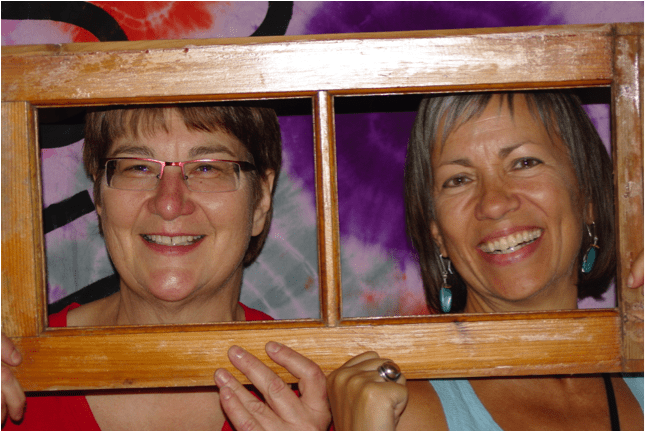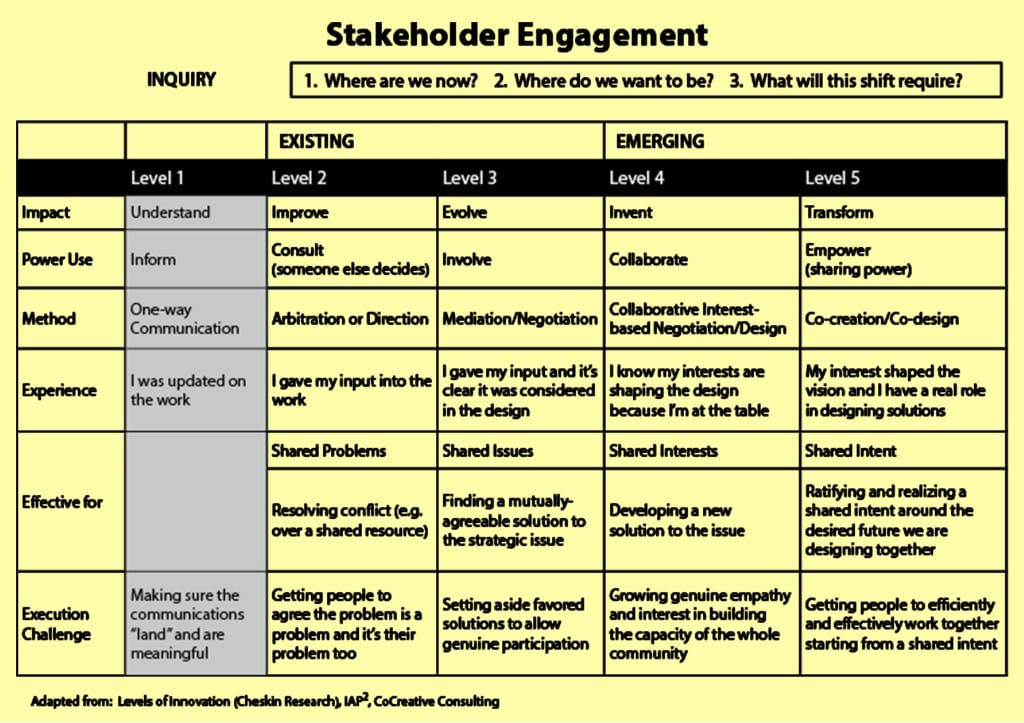Developing an organizational vision with the long-term capabilities of both people engagement and product or service innovation requires bringing the entire organization into the planning room. Organizations are complex entities with people, processes and systems all needing to be coordinated and aligned. And, frankly speaking, the senior management of an organization no longer holds the required knowledge to effectively and efficiently set direction, coordinate work and manage change. When the entire stakeholder body (the whole organizational system) is engaged in planning and designing its desired experience, governance becomes everyone’s business. A shared purpose and shared values, when mutually agreed upon by everyone, serve to strengthen the integrity of the overall organization as well as its individual participants.
In more traditional governance systems where CEOs run the show without the accountability of their frontline peers, statistics indicate a tendency toward disintegrative and even criminal behaviour. In a sample of CEO employment agreements from the top 1000 U.S. corporations, note the violations of integrity.
Integrity violations amongst senior leadership are less likely to prevail when the whole organization is enrolled in design, development and change. Furthermore, without whole system engagement, it is unlikely the organization’s inhibiting cultural assumptions will be confronted. These key cultural and operating assumptions, whether functional or dysfunctional, govern an organization’s effectiveness. Some examples of such assumptions are listed below:
- Win at all costs.
- Everyone else is doing it so it must be right.
- We have always done it this way.
- If we don’t do it, some one else will.
- It doesn’t matter how it gets done as long as it does.
- It’s too expensive.
- It takes too much time.
When we enlist the involvement of an entire organization, its process of transformation becomes a “learning by doing” experience for all stakeholders. Their experience is an entirely different investment than a leadership strategic planning retreat or a skills-based leadership and management-training program. Strategy identification and deployment as well as skills training certainly emerge as a result of a whole system process but only when it is very clear exactly what is required for success.
Successfully engaging stakeholders necessitates starting where everyone is at with regard to their anxieties about learning something new and changing their work experience. In essence, by engaging the staff’s heads (thinking), hearts (being) and hands (designing and doing) in planning and executing—shared purpose, values, desirable destination and outcomes—you succeed in both whole person and whole system change. Most importantly, the change realized is the change everyone wants to have.
Use the table below to assess your own stakeholder engagement style. Do you consult, involve, collaborate or empower others when you need to make changes?
IMHO, when issues are shared by everyone, so must solutions be agreed upon by everyone. What has allowed my teams to write and publish seven books in five years is collaboration, co-creation and co-design. Sharing power and becoming a peer-participant enabled a shared intent to emerge, an enriched learning experience for the entire team and a confidence in our ability to work through whatever difficulties arise.
For more information on engagement and innovation, click here.







